The baptismal font and its spectacular carved cover are in the small bapistry room at the back of All Hallows Church by the Tower. We first saw it through the wrought iron doors of the baptistry … locked wrought iron doors.
We found the verger, Martin Eatough, and asked if he would unlock the doors to allow me to take photos. He did, very cheerfully. We had a most enjoyable several minutes with him discussing the beauty of this church and other matters.
“This is the treasure of the church.”
Martin Eatough – Verger
The cover is spectacular. Look closely at the photos and notice the different shades of wood color and different grain patterns. Here one can begin to understand how Gibbons built complex carvings by creating many layers. Gibbons’ delicate foliage carving techniques were well advanced by this time. The cherub faces are distinctive and quite different from the typical cherub of the time. Typical cherubs were strikingly similar, showing innocent, almost blissful, young faces. Gibbons’ cherubs appear to be individually modeled from different children and don’t always have the same expression.
An information plaque says that Gibbons was paid 12 pounds in 1682 by James Foyle. Mr. Foyle was a patron of All Hallows Church by the Tower, but we know little more than that about him. Nor is there very much written about the carving. Esterly, the current world expert on Gibbons’ woodcarving, does not mention this work in either of his books, and all online mentions I have located are in association with this beautiful church.
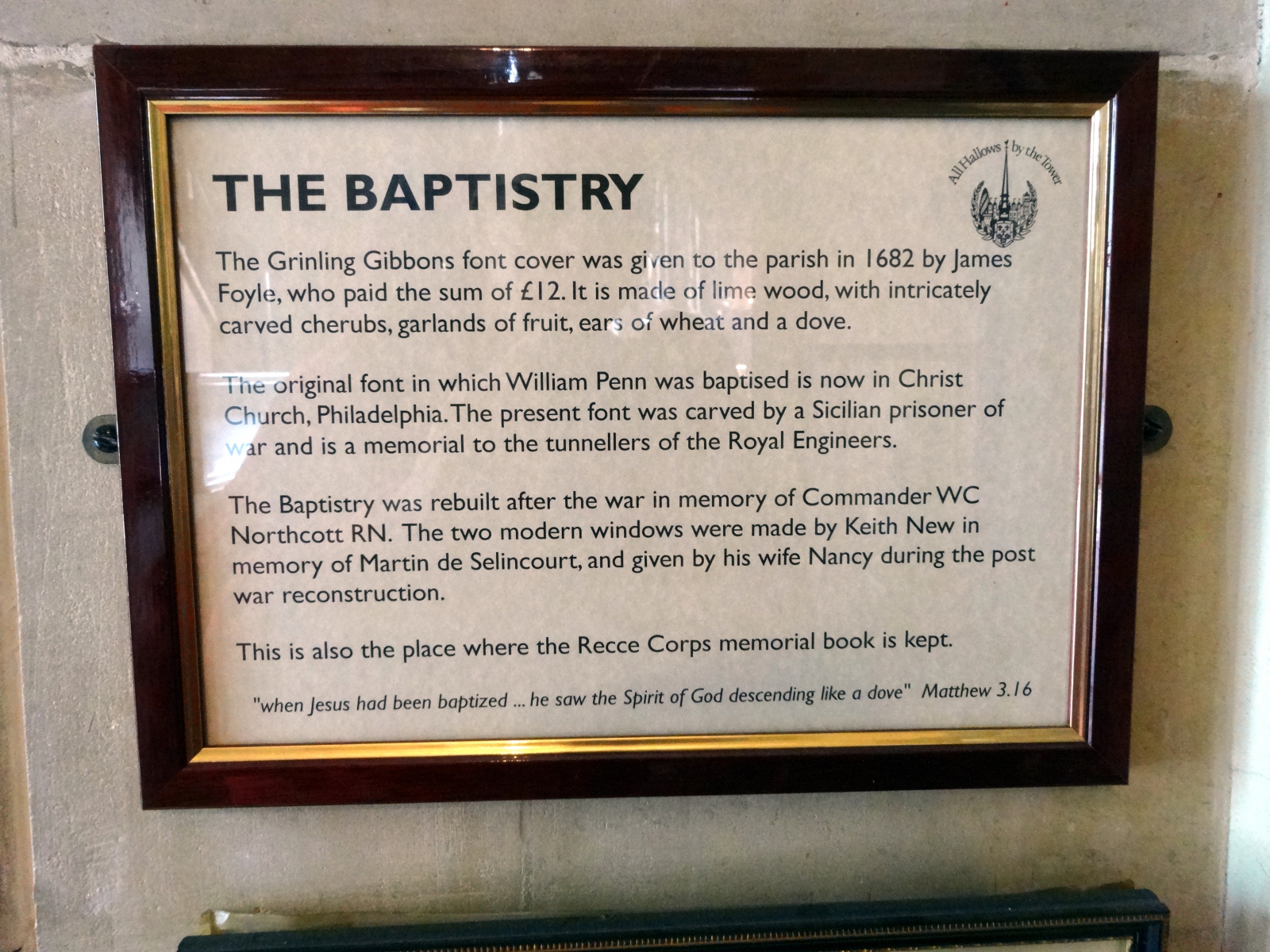
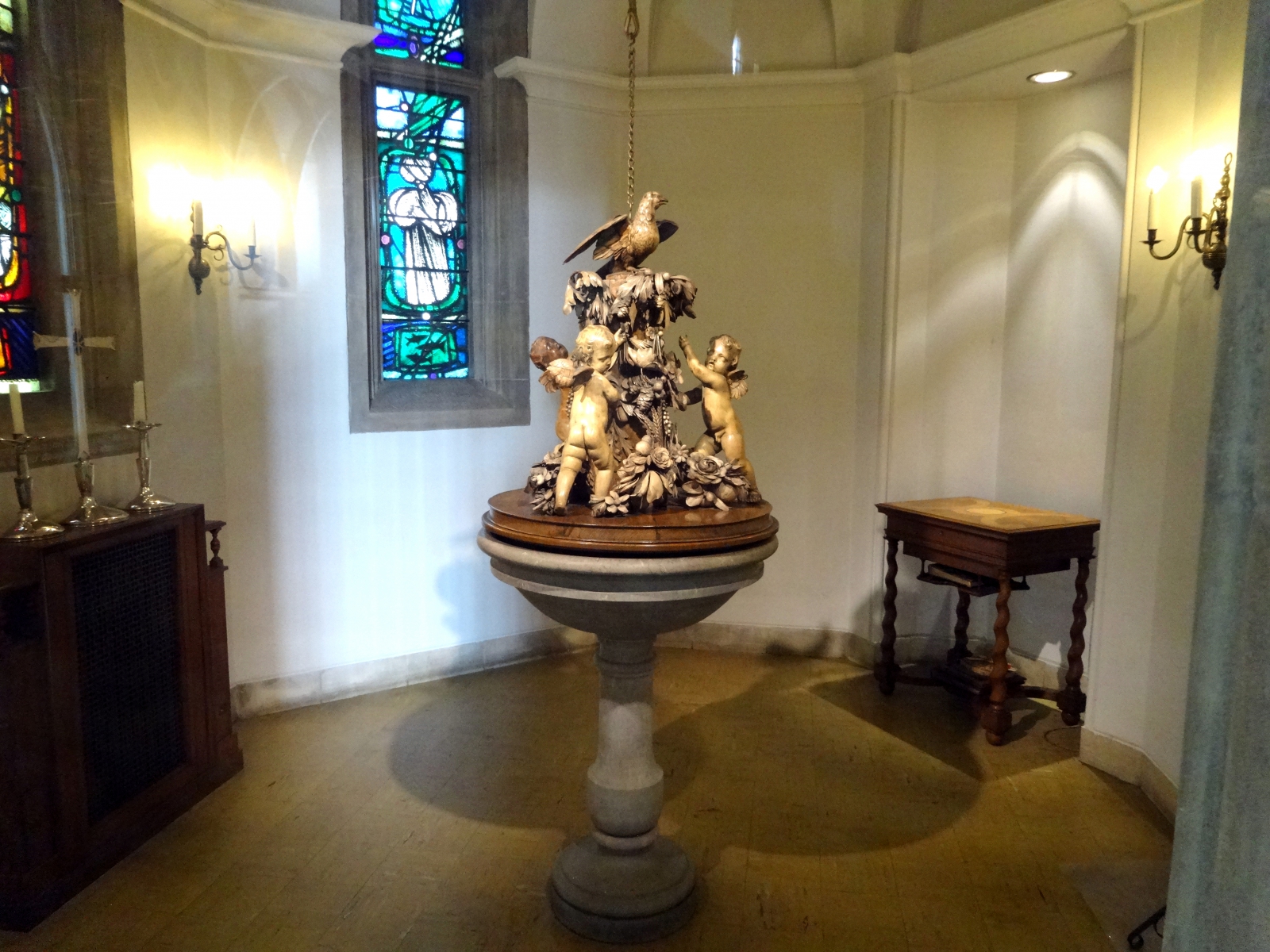
The chain that you see in some photos is for lifting the cover to gain access to the baptismal font.
Thank you Mr. Eatough, for opening the doors and letting me get photos of this beautiful carving!
Let’s walkaround the font cover.
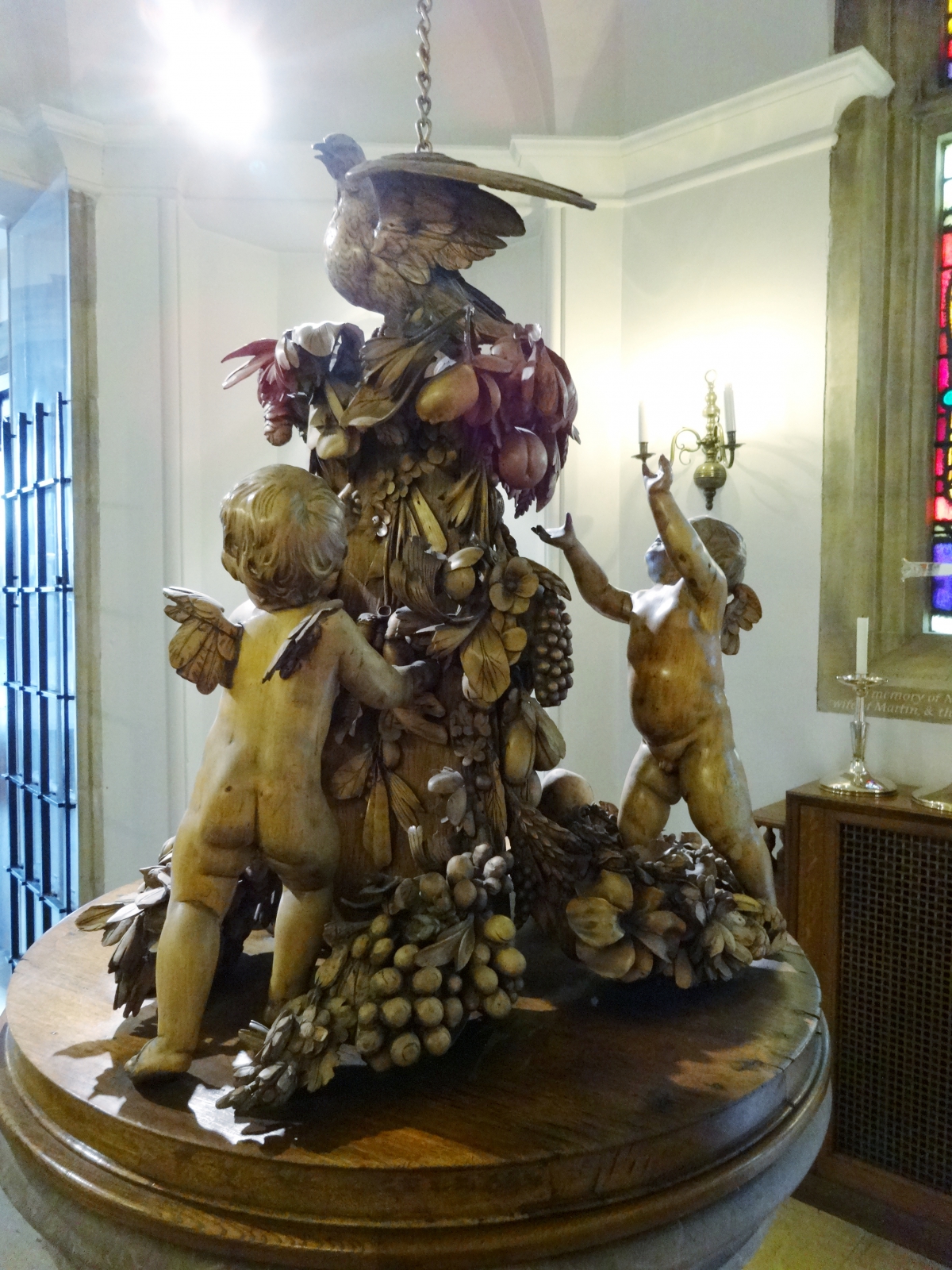
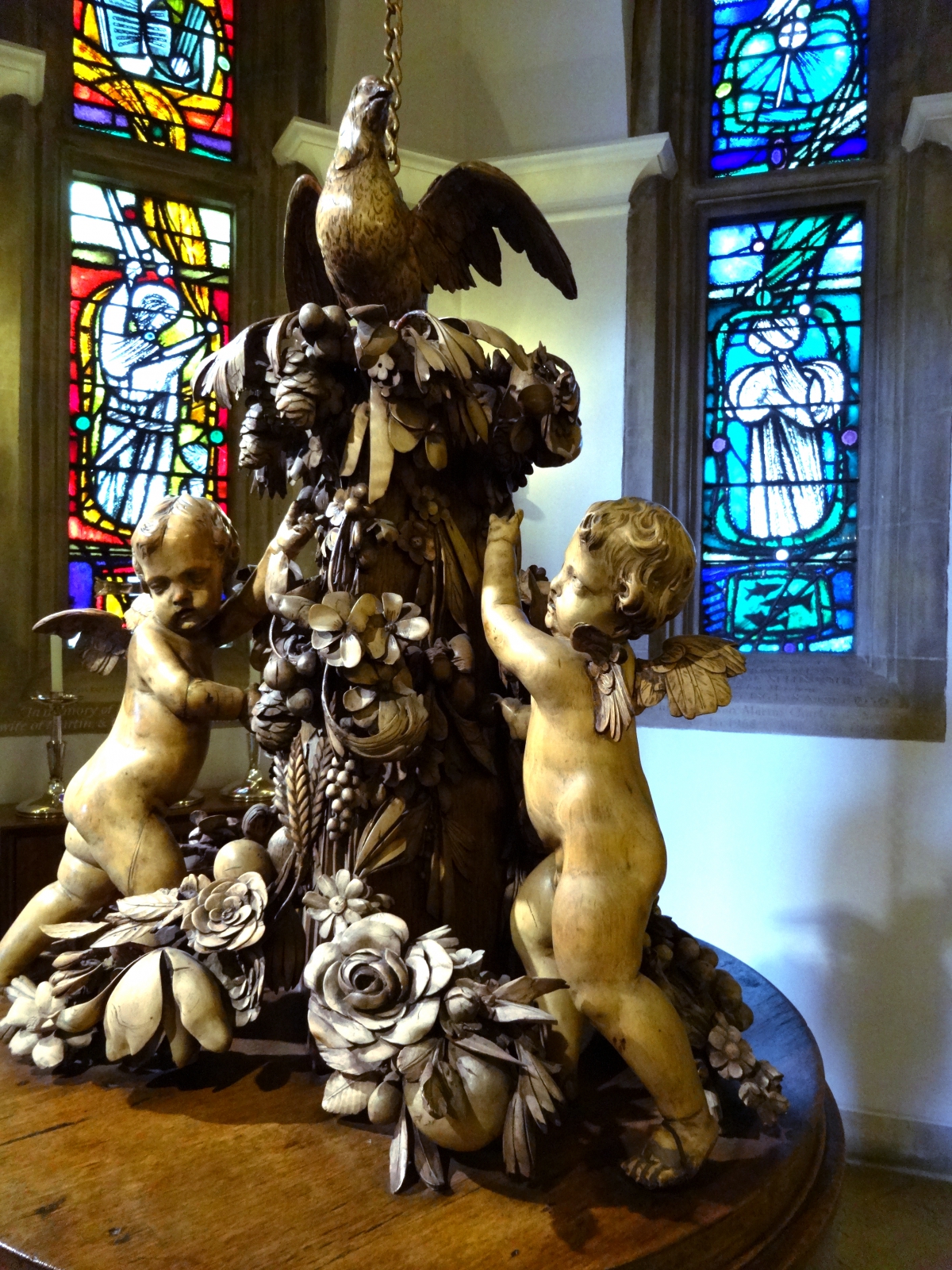
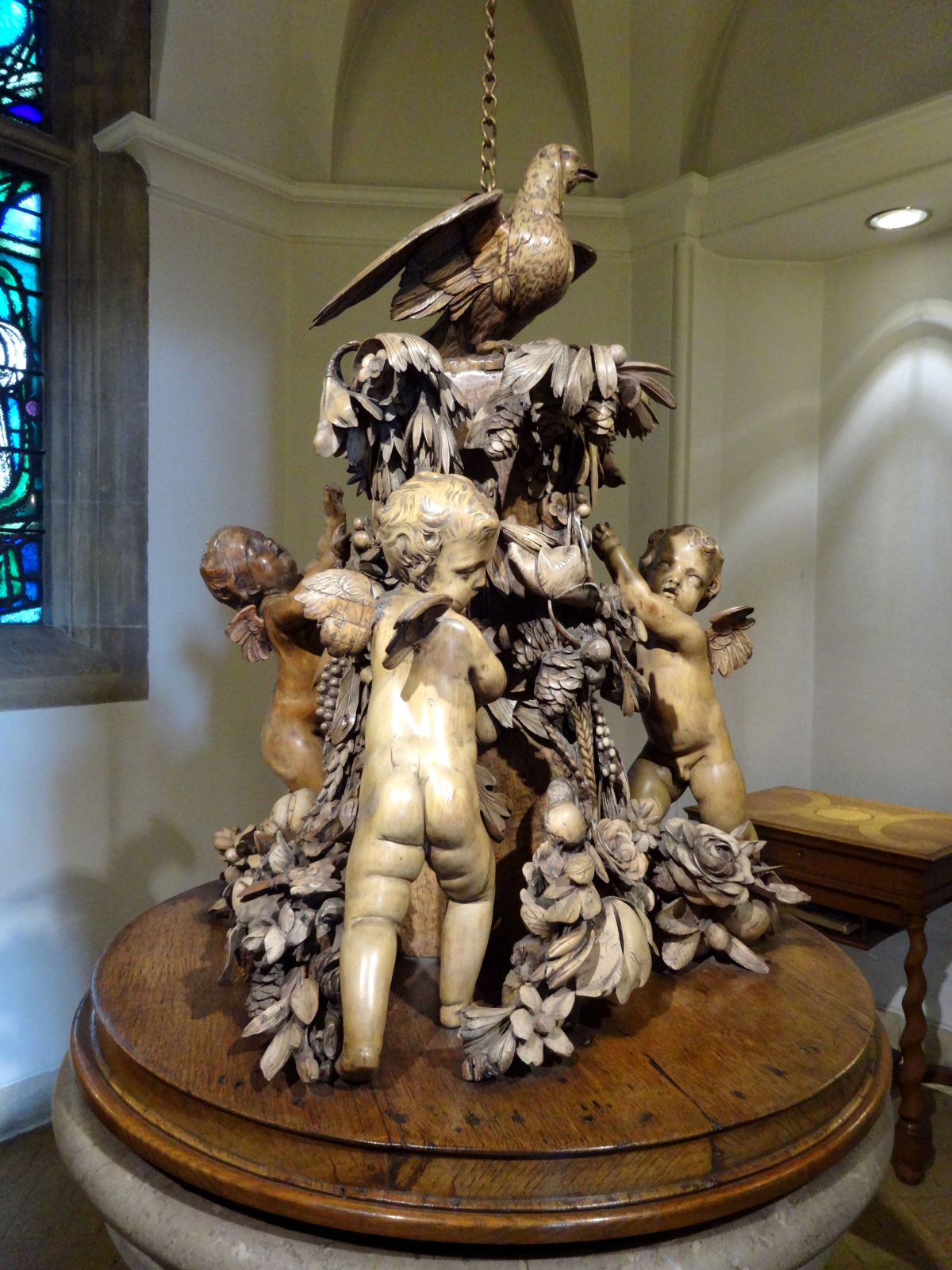
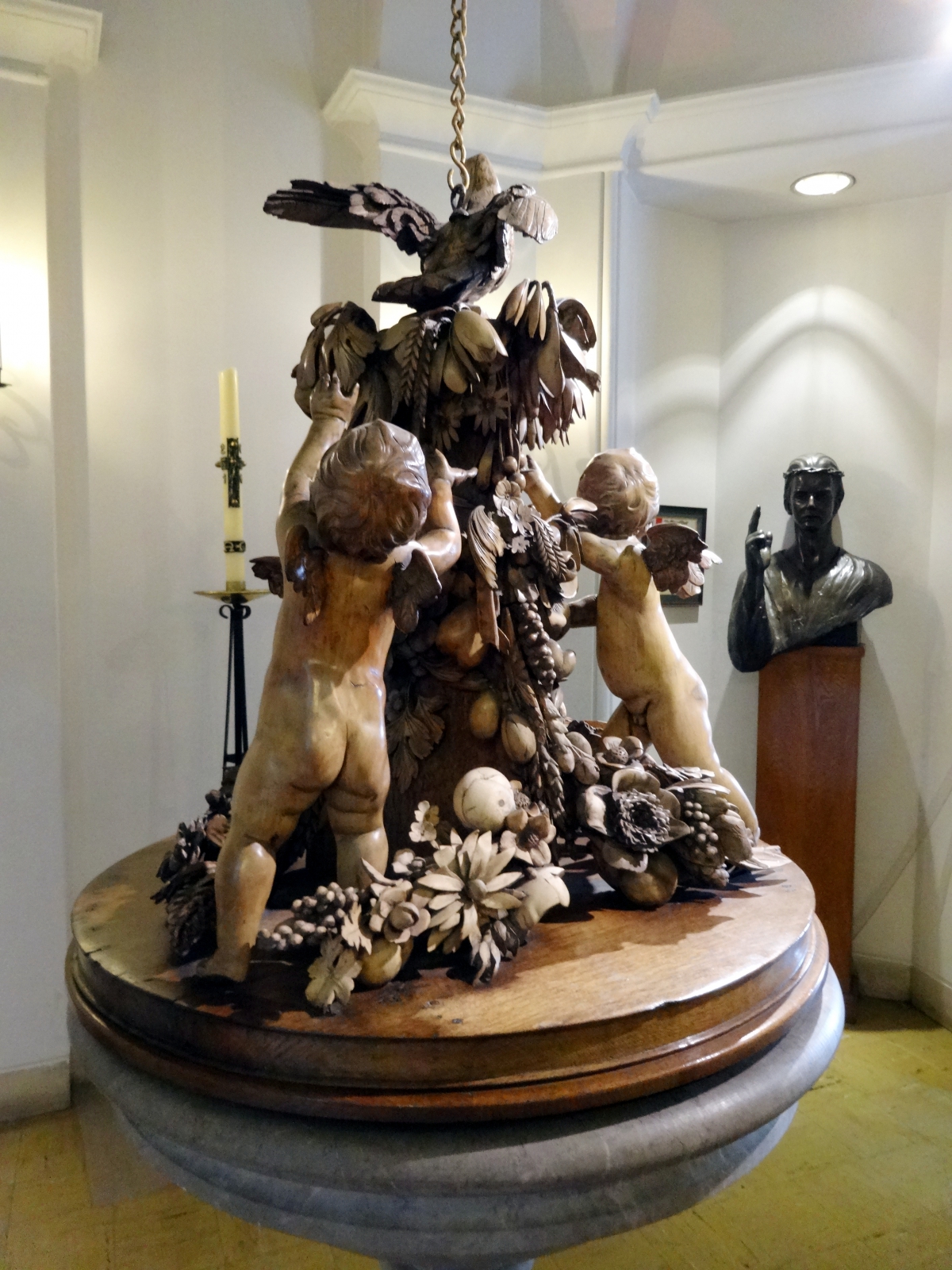
Then, let’s get closer for details.
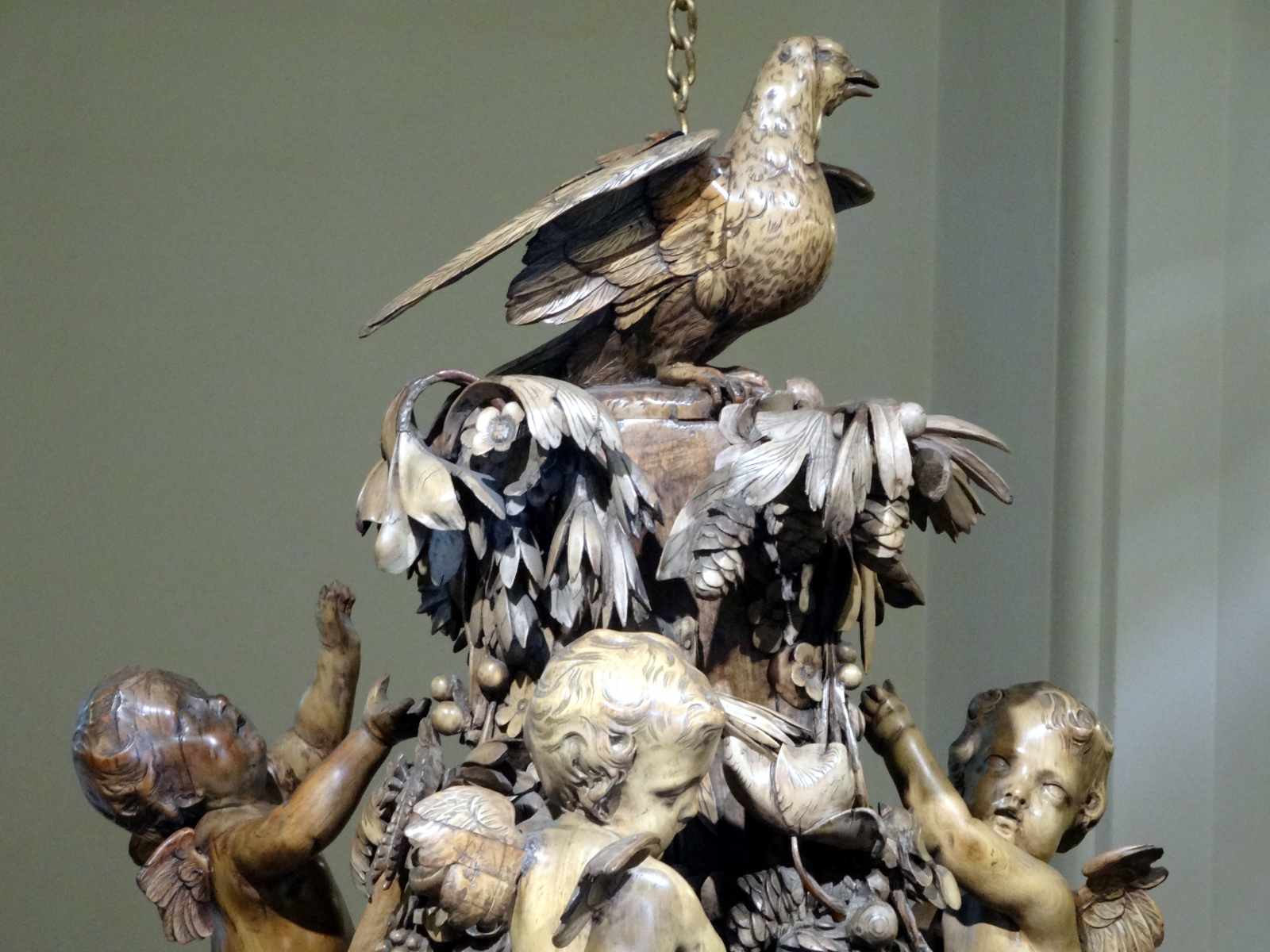
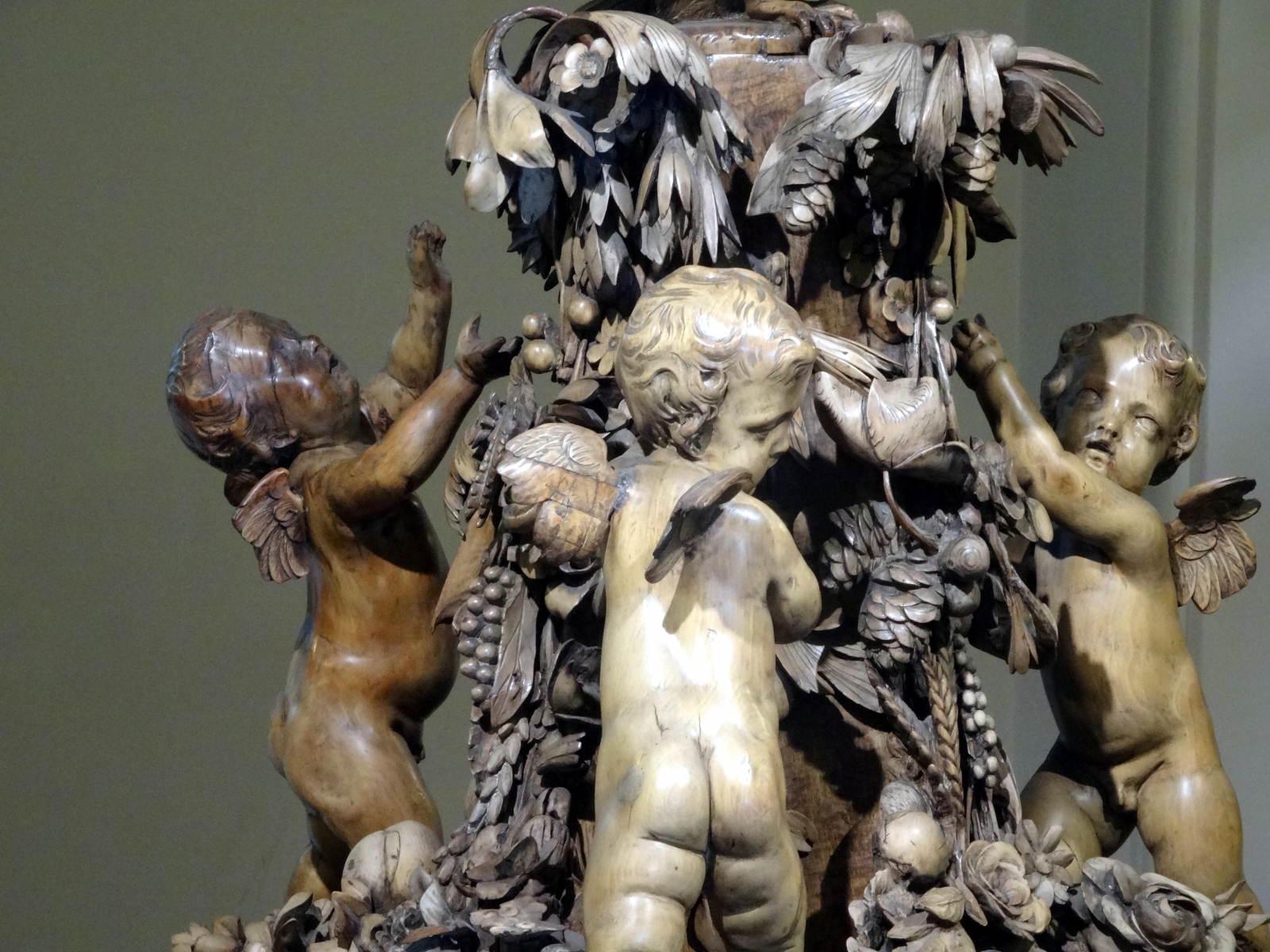
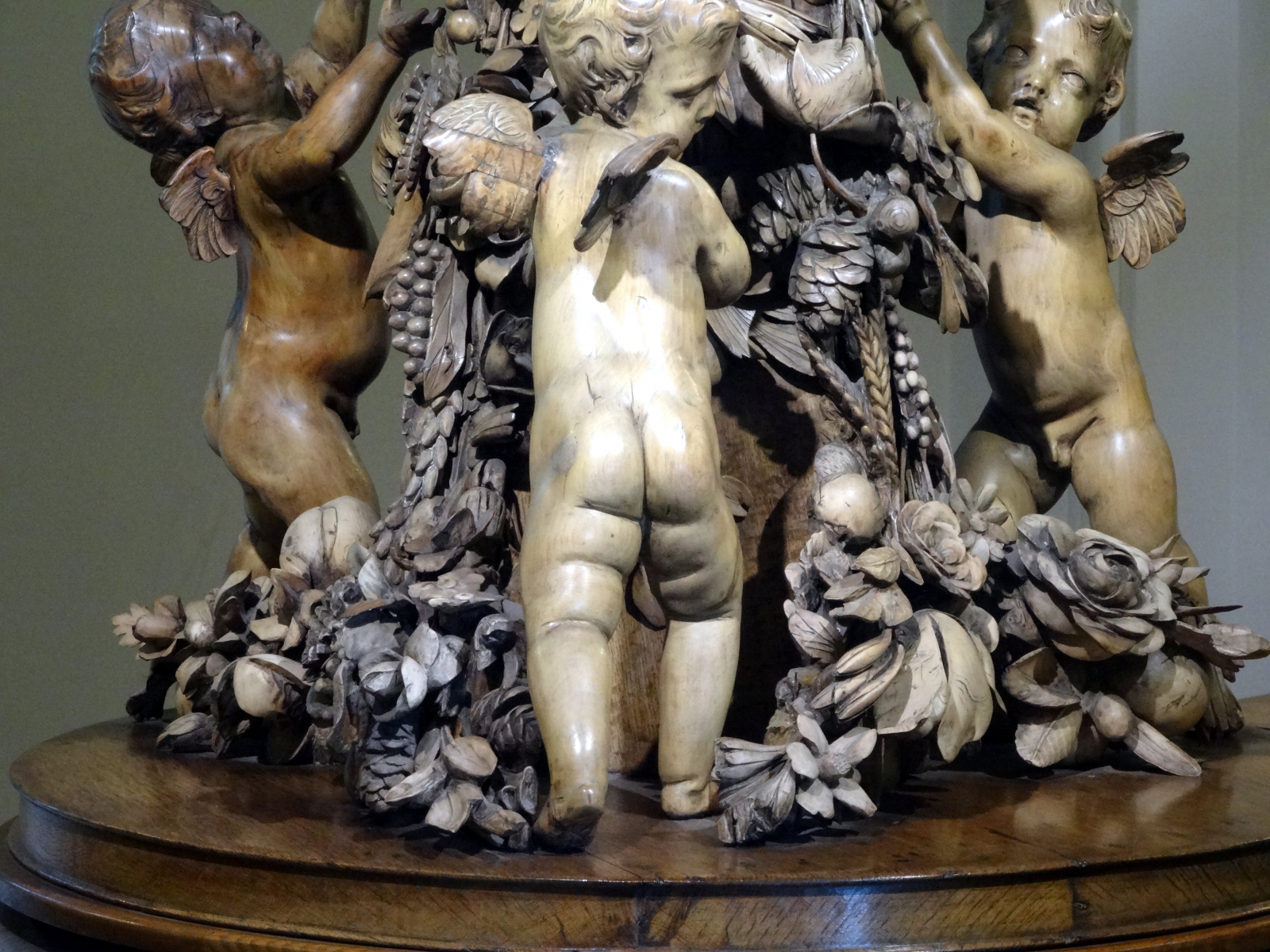
Oh, by the way…
All Hallows by the Tower is the oldest church in London and sits a few steps from the Tower of London. It holds many treasures, both in art objects and the contents of its crypt, and also in history. Information about the church tells us of many famous people connected with the church, including our own (USA) William Penn and John Quincy Adams.
The church has survived many catastrophes including: the Great Fire of London (1666), a gunpowder explosion that destroyed 50 homes around it and killed 67 people (1650), and the London bombings of WWII which severely damaged the building, leaving only one wall and the tower (1940-41).
Today, it is bright and airy, and extremely well cared for. We imagine the church’s finances are well managed, and (perhaps?) they are supplemented by the fine little cafe in its courtyard.
See much more of the church with this “virtual tour.”
P.S. In the pews, instead of kneeler benches, we found these very attractive cushions:
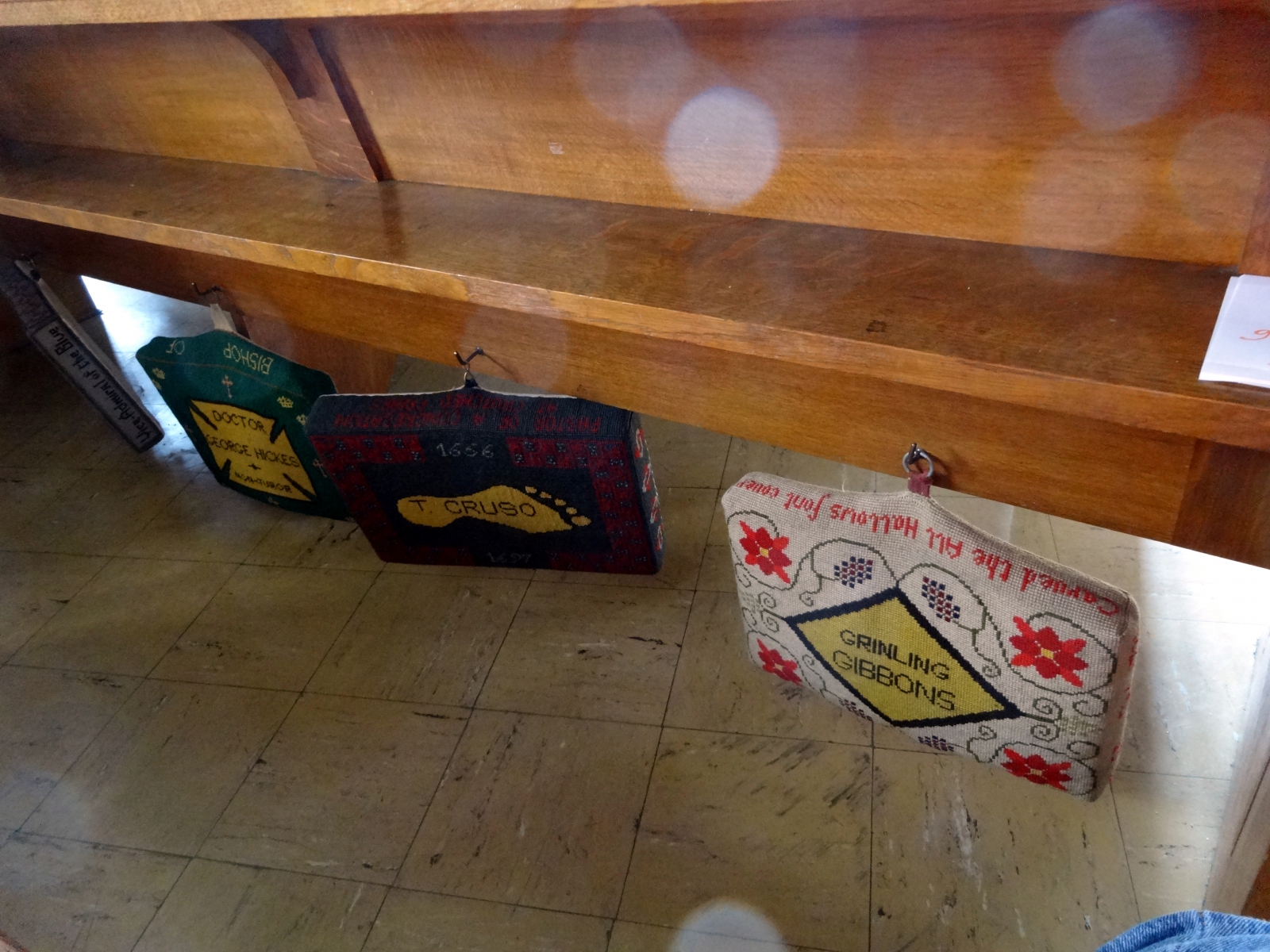
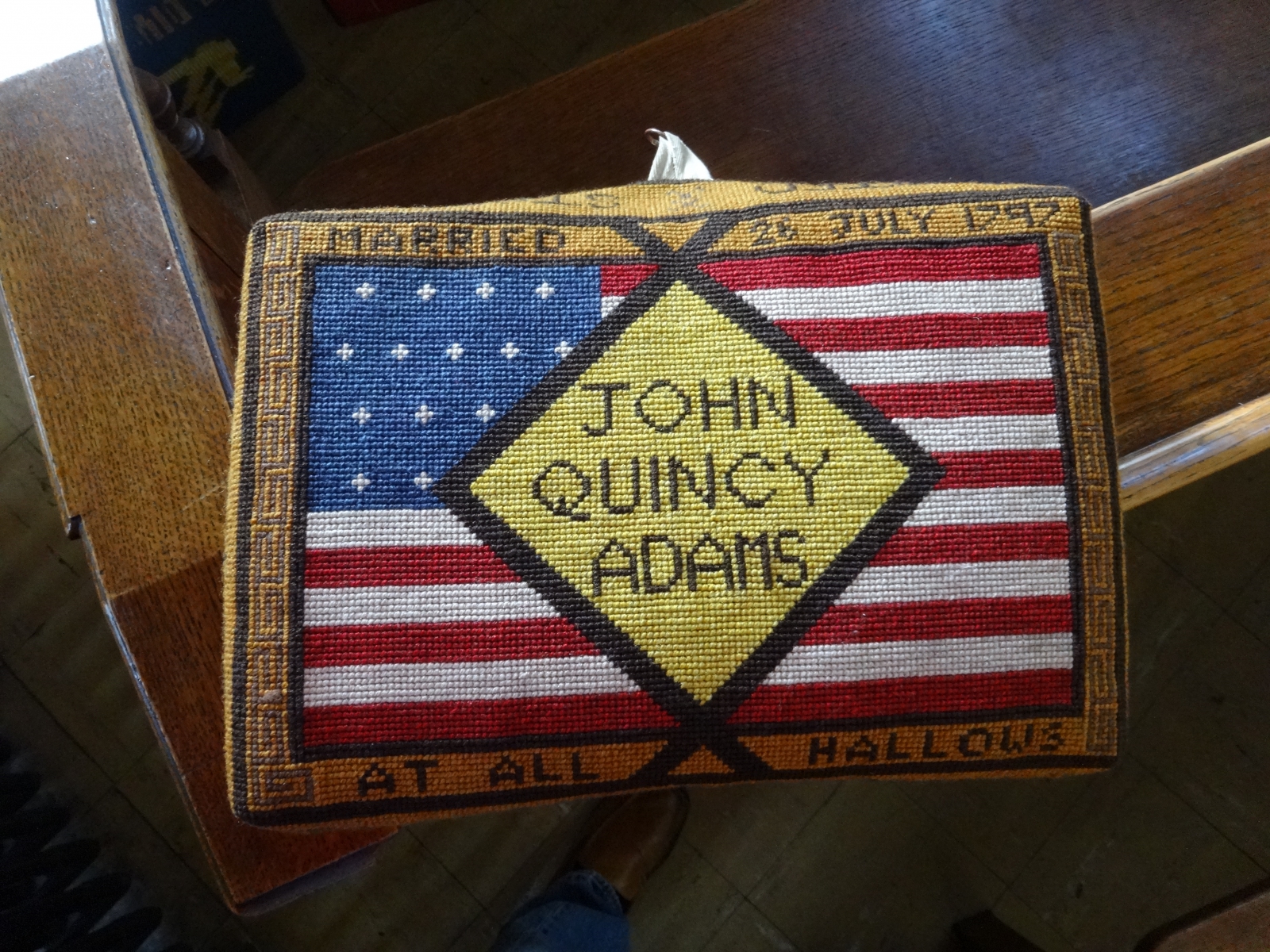
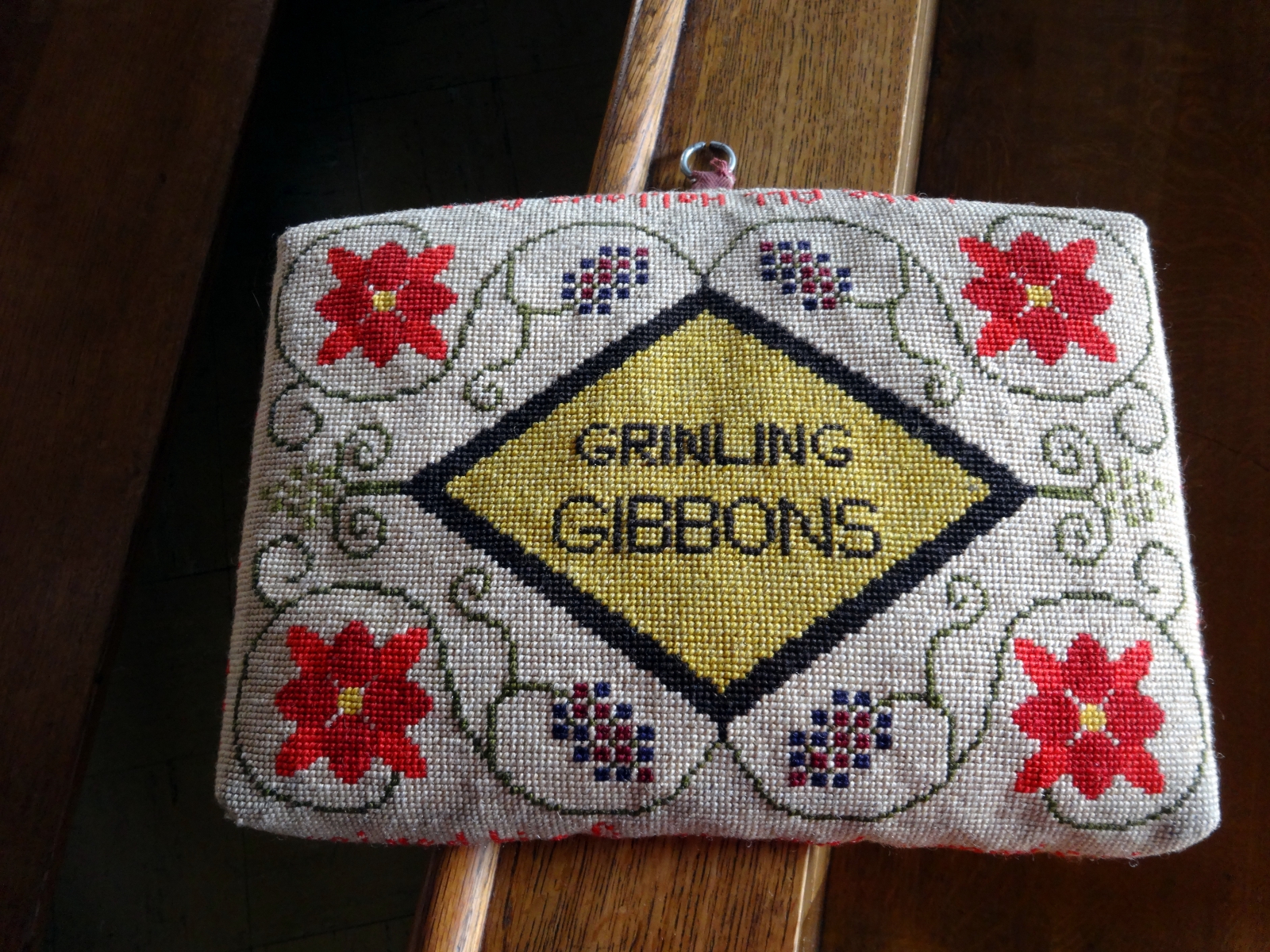
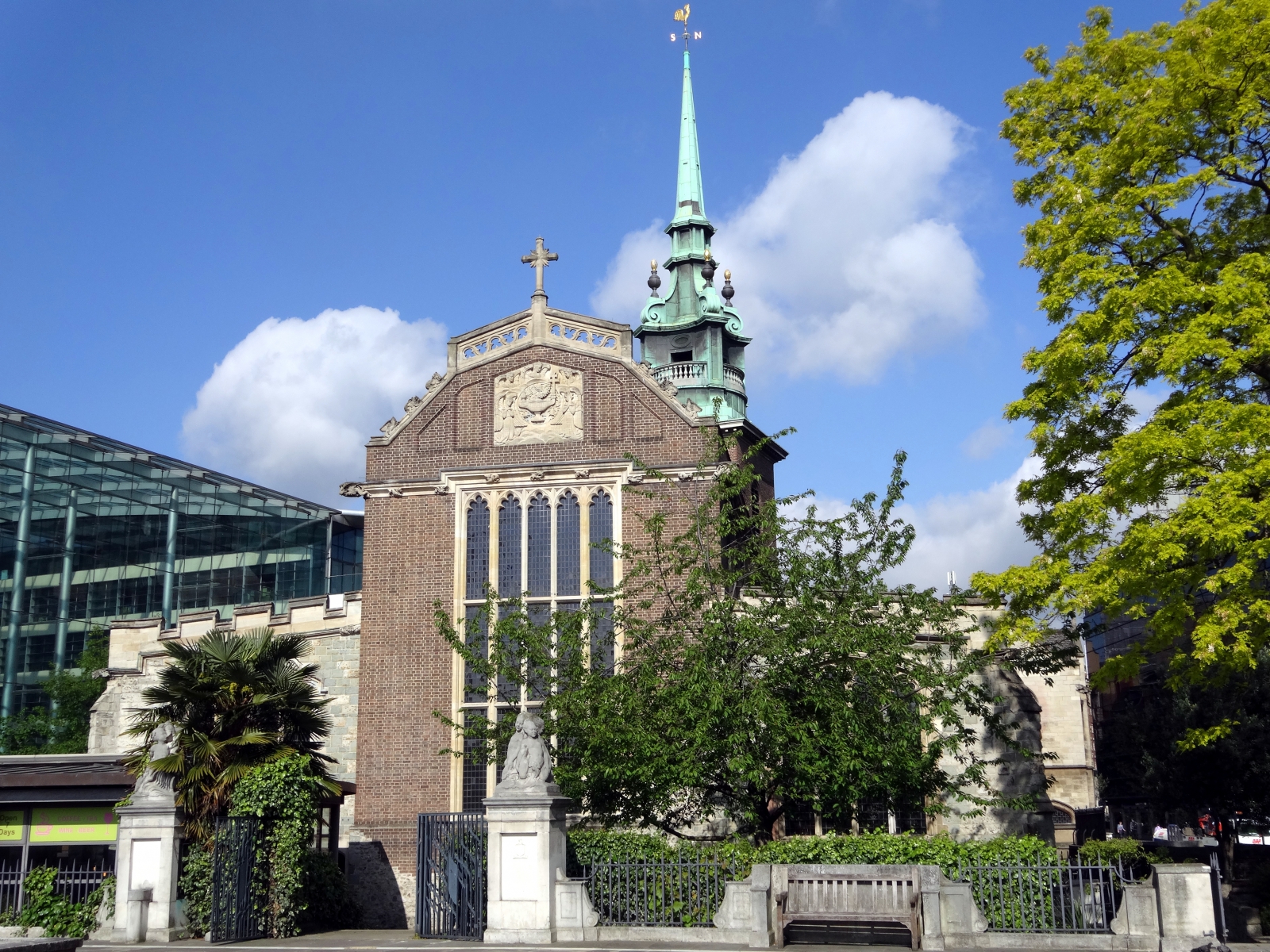
Your comments are welcome: